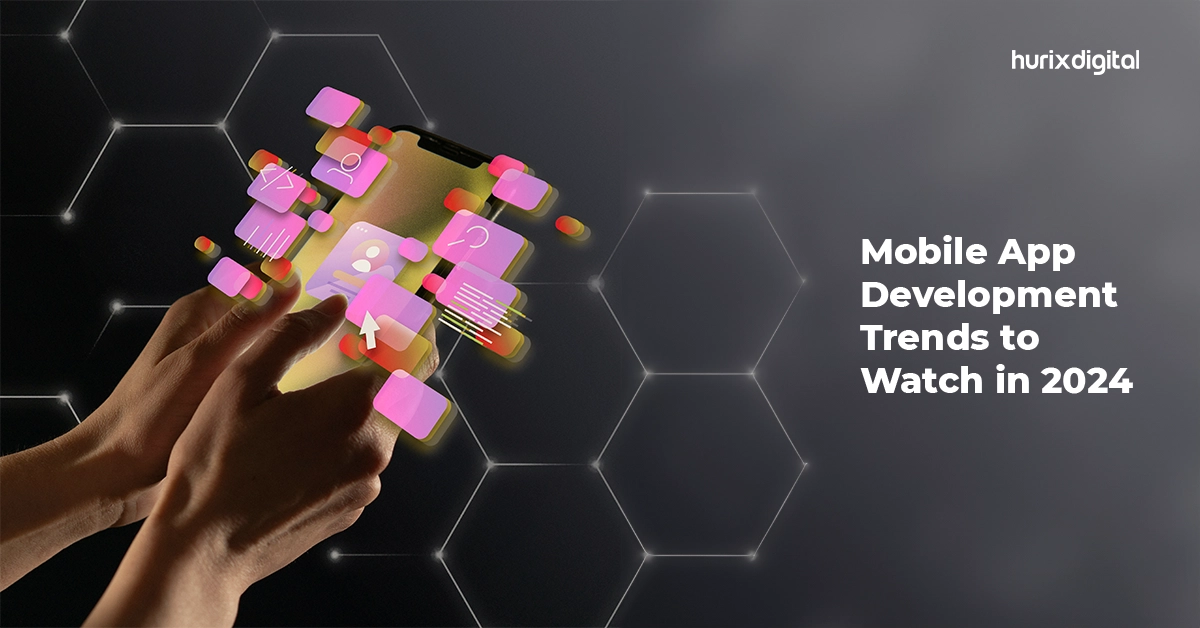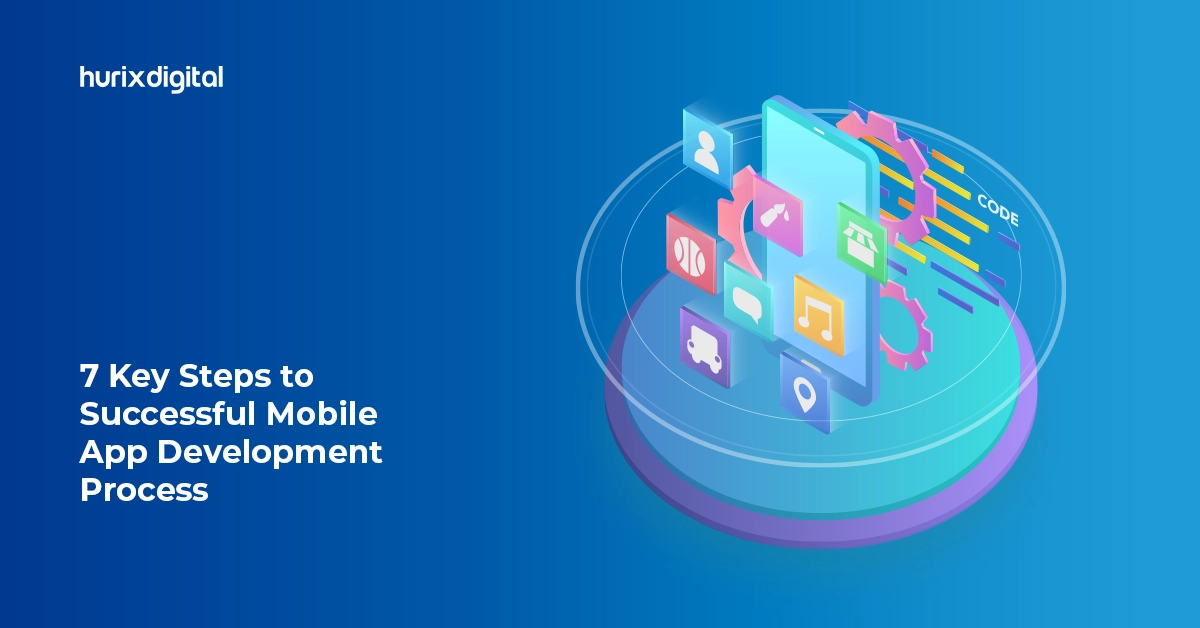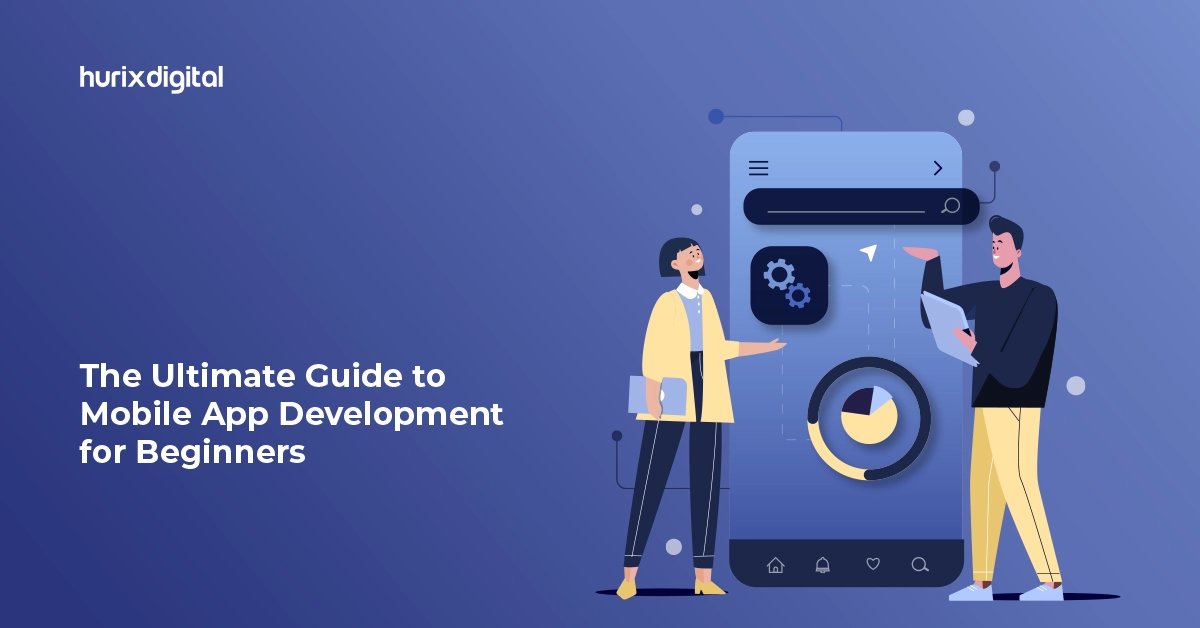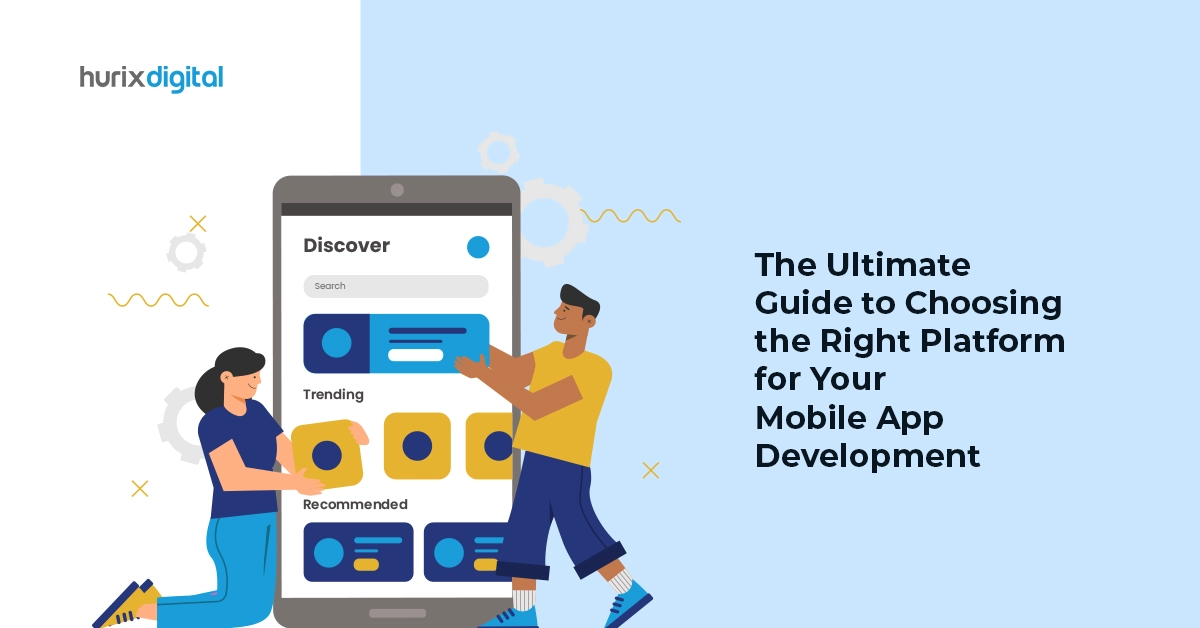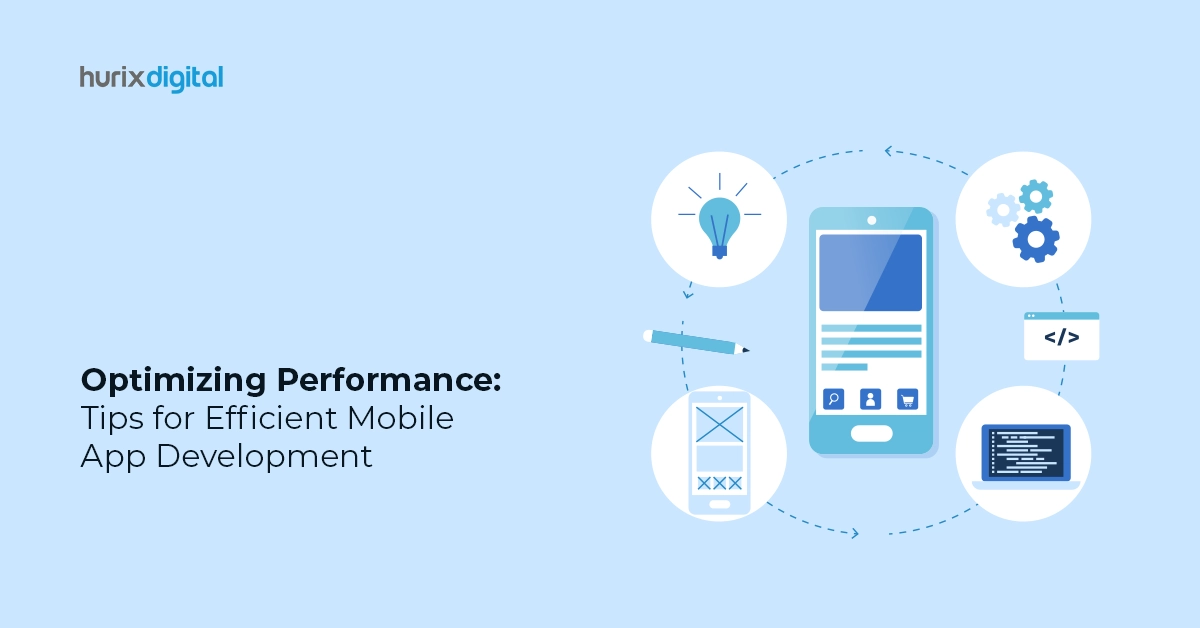Summary
The mobile app industry in 2024 will witness rapid innovation and disruption. To stand out among 5 million apps, developers must leverage trends like AI, 5G, security, microapps, and low-code platforms.
As we enter 2024, the mobile app industry is poised for rapid innovation and disruption. With over 5 million apps already, standing out requires leveraging the latest trends and technologies. Here are some of the most important mobile app development trends that will impact businesses in the coming year.
Table of Contents:
- Top 12 Mobile App Development Trends to Watch Out for in 2024
1. Artificial Intelligence and Machine Learning
2. 5G Connectivity
3. Enhanced Security
4. Instant Apps
5. Augmented Reality
6. Wearable App Integration
7. Cloud-Based Apps
8. Micro apps
9. App Cloning
10. Low-Code Development Platforms
11. Accelerated Mobile Pages
12. App Performance Monitoring - Conclusion
Top 12 Mobile App Development Trends to Watch Out for in 2024
1. Artificial Intelligence (AI) and Machine Learning (ML)
AI and machine learning have become integral for mobile apps looking to deliver intelligent experiences. In 2024, expect to see more on-device machine learning models that can function without needing cloud connectivity. For instance, apps may use localized AI to provide personalized recommendations, predictive typing, advanced natural language processing, and augmented reality features.
Another key area is virtual assistants and chatbots. More apps will integrate conversational interfaces powered by AI, allowing two-way dialogues with human-like interactions. The AI training data for these chatbots will improve, reducing repetition and making conversations more contextual. AI is also making apps more memory efficient – for example, apps may store AI models on-demand instead of requiring full downloads.
Overall, integrating the right machine learning capabilities will be crucial for faster, smarter, and more intuitive apps.
2. 5G Connectivity
As 5G networks expand globally in 2024, mobile apps will need to harness the power of faster connectivity speeds, lower latency, and increased capacity. 5G enables sophisticated apps for high-resolution video streaming, multiplayer augmented reality games, industrial IoT, and other data-intensive uses. Apps optimized for 5G will have performance advantages over non-optimized apps.
App developers need to build with 5G in mind right from ideation. This includes using 5G APIs, optimizing data transmission methods for speed, implementing graphic-intensive designs, and testing rigorously on 5G networks. Apps not upgraded for 5G capabilities risk being left behind as users enjoy greater connectivity.
Also Read: The Impact of Mobile Apps Solutions on User Experience & Beyond!
3. Enhanced Security
Mobile apps handle increasingly sensitive customer data, making security a top concern. App developers will need to implement sophisticated safeguards in 2024 to earn user trust. Advanced biometrics like Face ID, fingerprint authentication, and behavioral analysis will become table stakes. Apps may incorporate blockchain technology for added security around data records and transactions.
Other security measures like stringent data encryption, timely patches, and multi-factor authorization will be essential as well. The growing user awareness around privacy also means transparent data usage policies and consent flows in apps will be required. Security and privacy protections need to be robust while enabling smooth user experiences.
4. Instant Apps
Instant apps provide a way to immediately try out an app’s core functionality without installing it. Users can quickly test drive apps by tapping links on websites or ads. If they like the experience, they can then download the full app. For developers, instant apps allow expanded distribution without being limited to app stores.
In 2024, the adoption of instant apps will gain momentum as their utility becomes more apparent. They complement full apps, offering a convenient preview experience. Used strategically, instant apps can become a power user acquisition channel driving increased installs and engagement. Their seamless, lightweight nature also suits micro apps focused on specific functions.
5. Augmented Reality
Augmented reality gained huge popularity in mobile gaming, but now its utility is expanding across sectors. For instance, Ikea and Wayfair use AR apps to let shoppers visualize products in their actual rooms before buying. Healthcare apps employ AR to demonstrate anatomy and medical devices. Fitness apps track workouts with AR overlays. As AR technology improves in 2024, more apps will integrate immersive experiences.
Developers need to look beyond basic AR filters toward more functional implementations. Multiuser AR experiences and 3D overlays without markers hold great promise. Tools like ARCore and ARKit reduce complexity for developers. As users grow accustomed to AR-first apps, it will become a distinct competitive advantage.
6. Wearable App Integration
The soaring adoption of smartwatches, fitness bands, smart glasses, and other wearables requires apps to integrate cross-device functionality. Apps in 2024 need to factor in real-time data from wearables like health stats and location to deliver enhanced experiences. Expanding companion apps for wearables that sync smoothly with smartphone apps will be key.
Developers have to optimize apps for smaller wearable screens simultaneously with smartphone apps. Fast pairing protocols need to be built between wearables and phones. Testing apps extensively across diverse wearable devices is recommended, as slight interface differences impact usability. Hands-free voice controls will also rise in prominence for wearables.
Also Read: Advantages of using AI in language learning mobile applications
7. Cloud-Based Apps
Mobile apps are increasingly reliant on the cloud, and 2024 will see accelerated adoption of cloud-first app development. Cloud infrastructure enables flexibility to scale storage, computing power, and costs based on real-time demand. Syncing app data across devices and platforms becomes seamless using the cloud. Edge computing improves response times by processing data closer to users.
However, the cloud also comes with security and compliance considerations. Developers need to implement robust cloud security practices around data encryption, identity management, timely software patches, and rigorous access controls. As cloud-based apps handle more mission-critical functions, security is paramount. Hybrid models combining the cloud with some on-device processing may provide the right balance.
8. Micro apps
Microapps deliver a single specialized function in a streamlined way. They load faster and require less storage than large, bloated apps. In 2024, using microapps for specific use cases will gain significant traction. For instance, enterprise micro apps may enable workflows like approvals, data capture, notifications, and real-time collaboration. Micro apps can also power customer-facing functions like shopping carts.
Developers should assess opportunities where micro apps can offer targeted utility for end users over broad-based apps. They are well-suited for transactional workflows that need speed. However, microapps are not a complete replacement for fuller-featured apps. The two approaches can complement each other as part of a modular app ecosystem.
Also Read: 6 Expert Tips for Creating a Unique and Successful Mobile App
9. App Cloning
App cloning allows existing apps to be used as templates for building new apps. Developers can produce customizable app clones quickly by replicating code frameworks minus redundant back-end work. This significantly accelerates launch times, especially for apps in the same domain. As a best practice, cloned apps still need thorough testing for bugs.
In 2024, app cloning will gain mainstream adoption to reduce repetitive coding and deliver apps tailored to niche demands. For instance, an on-demand delivery app for groceries can be cloned for different geographic markets or specialized verticals like auto parts. While cloning speeds development, unique experiences still come from innovation atop core code.
10. Low-Code Development Platforms
Low-code platforms enable faster app development by substituting elaborate coding for simple drag-and-drop interfaces. This allows non-technical staff to build apps using prebuilt components that only require configuration. Low code is ideal for prototyping and creating enterprise apps for internal use. It also suits apps with uncomplicated workflows or data needs.
By abstracting away complex programming, low-code platforms can significantly shorten development timelines. In 2024, low code will become integral to boosting organizational productivity. However, for advanced native apps with sophisticated functionality, traditional coding is still needed. Low-code is not a magic bullet, but rather a strategic capability to leverage appropriately.
11. Accelerated Mobile Pages
Accelerated Mobile Pages (AMP) are optimized, lightweight versions of web pages designed for mobile. Created by Google, AMP significantly speeds up page load times by stripping down bloated code. In 2024, more websites will begin using AMP, which app developers can strategically harness. For example, in-app web views can adopt AMP for blazing-fast content without compromising experiences.
However, AMP has technical constraints around permissible code. Developers need to balance optimizing for speed with retaining desired functionality. Testing AMP thoroughly across target devices and networks will be important to avoid frustration from performance gaps. Used judiciously, AMP provides a performance boost, especially on slower networks.
12. App Performance Monitoring
To sustain engagement and growth, apps need to provide optimal speed, responsiveness, and stability post-launch. App performance monitoring and analytics tools provide actionable data to continuously improve apps after release. In 2024, these tools will become integral to precisely pinpoint issues like crash rates, load times, bottlenecks, and usage patterns.
Developers can use app performance insights to target development efforts for quick wins. For example, identifying devices with high crash rates can reveal compatibility issues. Network traffic analytics determines if backends need better optimization. User behavior data informs engagement strategies. Real-time monitoring will become crucial as apps face intensifying performance expectations.
Also Read: Why could Hurix be a right development partner for implementation of mobile applications?
Conclusion
The mobile app ecosystem is primed to ride a new wave of innovations in 2024 across AI, AR, wearables, cloud infrastructure, and more. As devices and networks keep evolving, meeting users’ high expectations will require capitalizing on the latest trends and technologies. Developing future-ready skills and keeping updated on emerging best practices will be key for mobile app developers to stay competitive and create standout experiences.
Hurix Digital specializes in aligning your app development strategy with these trends. From embracing cross-platform and hybrid development to leveraging AI and Blockchain, we offer expertise to navigate these emerging trends for your app’s success.
Contact us for more info!


